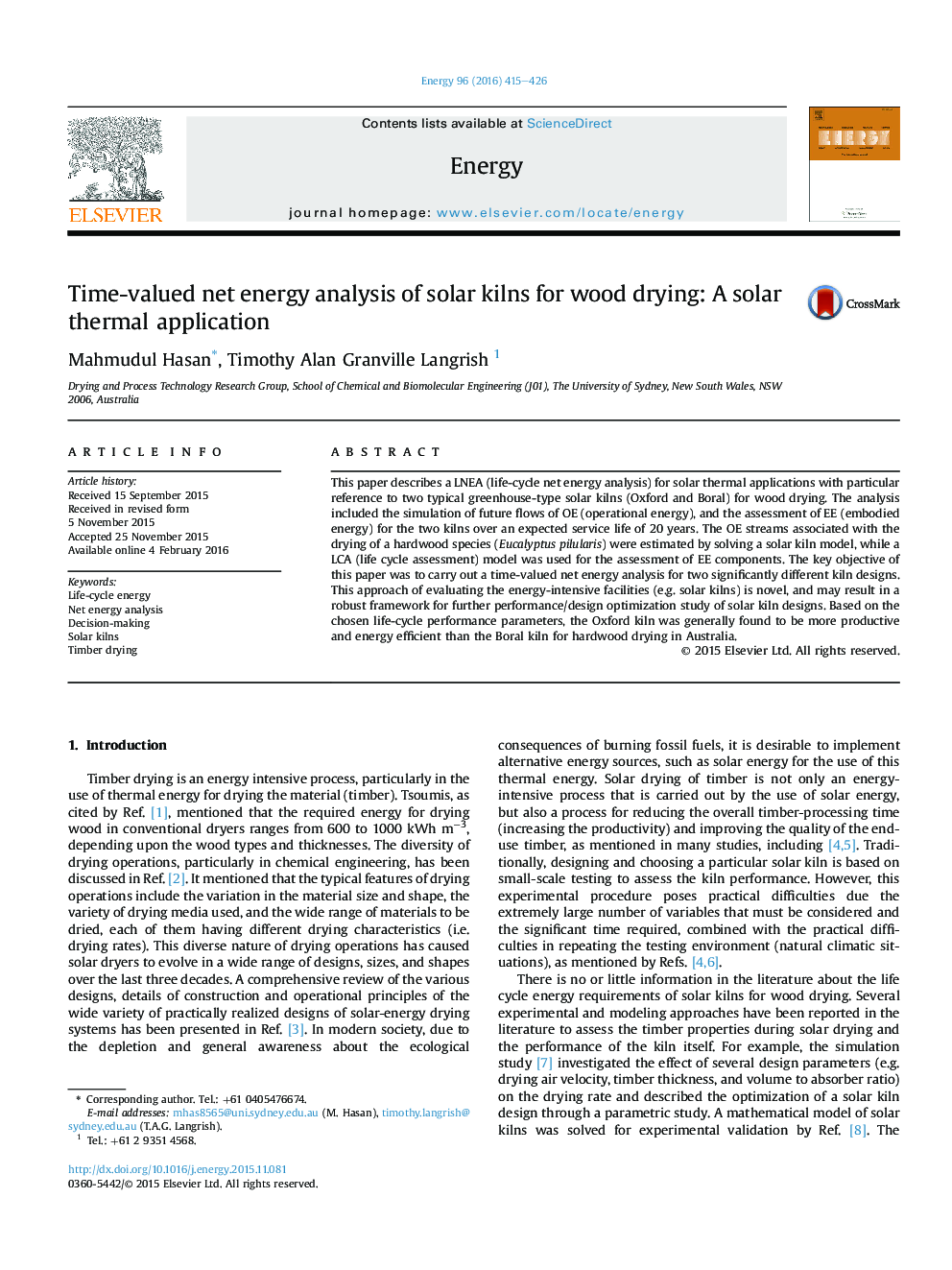| Article ID | Journal | Published Year | Pages | File Type |
|---|---|---|---|---|
| 1731280 | Energy | 2016 | 12 Pages |
•A novel approach for evaluating the performance of solar dryers has been presented.•A numerical simulation has been used for predicting the future operational energy flows.•For assessing the embodied energy, a life cycle assessment (LCA) model has been used.•Future performance optimization studies for solar kilns can be carried out based on this paper.
This paper describes a LNEA (life-cycle net energy analysis) for solar thermal applications with particular reference to two typical greenhouse-type solar kilns (Oxford and Boral) for wood drying. The analysis included the simulation of future flows of OE (operational energy), and the assessment of EE (embodied energy) for the two kilns over an expected service life of 20 years. The OE streams associated with the drying of a hardwood species (Eucalyptus pilularis) were estimated by solving a solar kiln model, while a LCA (life cycle assessment) model was used for the assessment of EE components. The key objective of this paper was to carry out a time-valued net energy analysis for two significantly different kiln designs. This approach of evaluating the energy-intensive facilities (e.g. solar kilns) is novel, and may result in a robust framework for further performance/design optimization study of solar kiln designs. Based on the chosen life-cycle performance parameters, the Oxford kiln was generally found to be more productive and energy efficient than the Boral kiln for hardwood drying in Australia.
